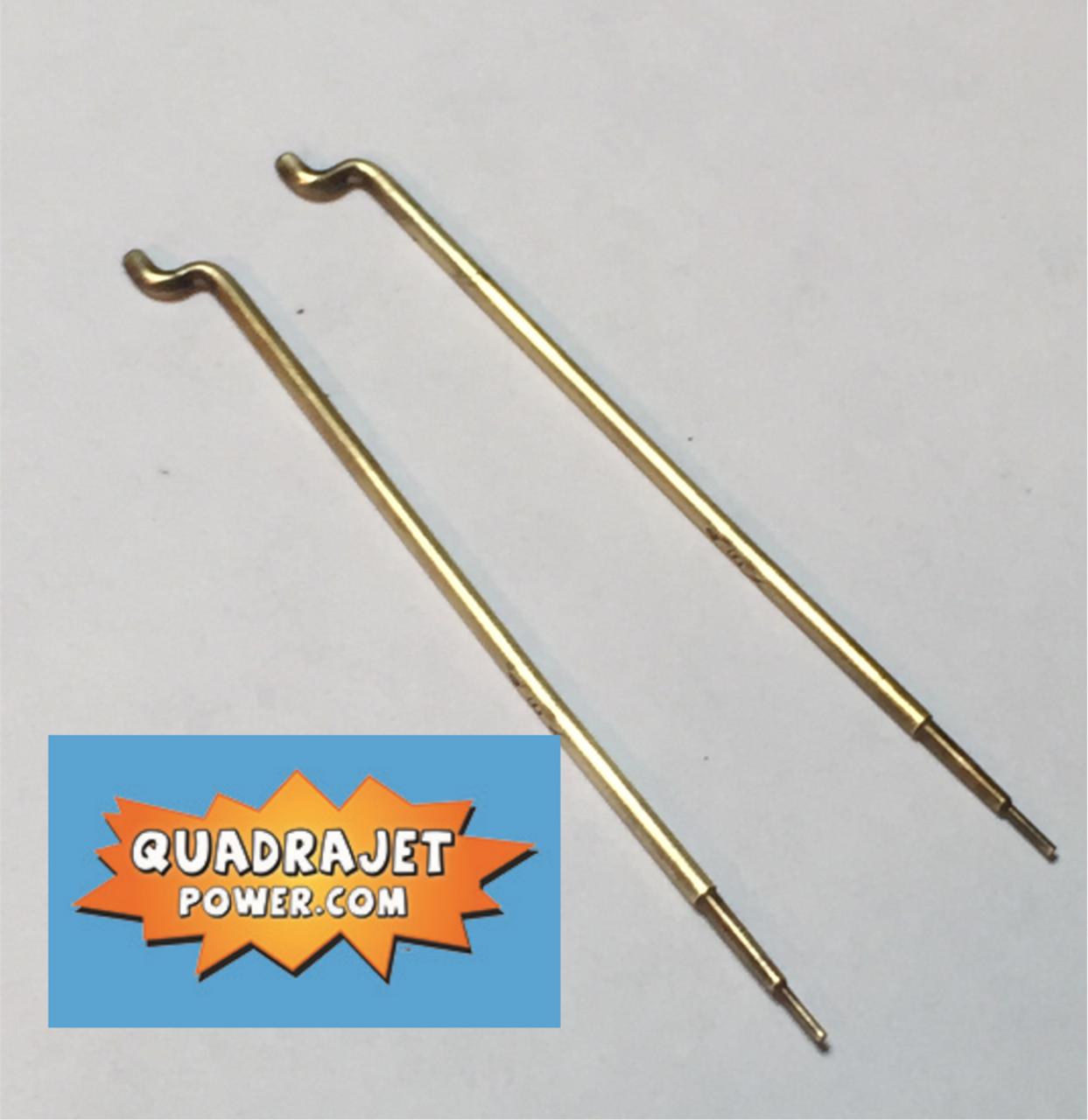This is a GenV 454 judging by the casting numbers we'd found before. I think it's a Goodwrench motor or something because an 85 should have still been the older style, right? No legs whatsoever. It has a peanut cam around 212/218 and .480" lift and long tube headers. Stock GM HEI.
Qjet Float Height Looks Wrong
- Thread starter Supercharged111
- Start date
You are using an out of date browser. It may not display this or other websites correctly.
You should upgrade or use an alternative browser.
You should upgrade or use an alternative browser.
- Status
- Not open for further replies.
So an 80's 454 is a big motor but the factory still set it up pretty lean. It didn't get the CCC carb yet so they kept it as emissions friendly as possible. I would agree with the #75 jets if the #58 rods kept it very lean at idle and part throttle. Then when the throttle was mashed the big jets fed the 454 enough to move a big load. That makes GM sense . Smaller rods like high 40's or low 50's would make it much richer for performance purposes.
So an 80's 454 is a big motor but the factory still set it up pretty lean. It didn't get the CCC carb yet so they kept it as emissions friendly as possible. I would agree with the #75 jets if the #58 rods kept it very lean at idle and part throttle. Then when the throttle was mashed the big jets fed the 454 enough to move a big load. That makes GM sense .
The question is how lean. Only the wideband can really sanity check the thing. I'd tuned my Edelbrock to cruise and idle stoich, but be 13:1 WOT. That took a metering rod from the far end of the chart to accomplish. I may just go with the alternate procedure outlined in the tuning guide because I can't see how to set it up the way the book tells me to. The rod will pass right through the jet. I'm guessing the rods are named in thousandths like the jets so makes sense.
The tips are all the same size at .026" IIRC. So once the power piston raises them out of the jets, the jet size is the determining flow factor. Those rods are the post '75 style which are very lean until they clear the jets. The older pre-'75 style are more smoothly tapered and thinner and were not as concerned with passing emissions. They are different lengths so they do not interchange. While your rods are a nice smooth taper- they are fatter- thus leaner. Mike the tips. If fatter than the .026" and the same overall length then it could pay to use the stepped rods.lean idle and part throttle and rich WOT.....
when I ran a qu
I mistakenly put longer pre 75 rods and the car ran like crap......the guy at the speed shop who sold them to me had them in the wrong package
The tips are all the same size at .026" IIRC. So once the power piston raises them out of the jets, the jet size is the determining flow factor. Those rods are the post '75 style which are very lean until they clear the jets. The older pre-'75 style are more smoothly tapered and thinner and were not as concerned with passing emissions. They are different lengths so they do not interchange. While your rods are a nice smooth taper- they are fatter- thus leaner. Mike the tips. If fatter than the .026" and the same overall length then it could pay to use the stepped rods.
I mistakenly put longer pre 75 rods and the car ran like crap......the guy at the speed shop who sold them to me had them in the wrong package
Would I just need a different hanger with the old style rods to make them work?
make sure you make a youtube video when you try that...

K, what a
K, what am I missing? You guys know more than me.
make sure you make a youtube video when you try that...
K, what am I missing? You guys know more than me.
- Status
- Not open for further replies.
Similar threads
- Replies
- 1
- Views
- 237
- Replies
- 5
- Views
- 330
GBodyForum is a participant in the Amazon Services LLC Associates Program, an affiliate advertising program designed to provide a means for sites to earn advertising fees by advertising and linking to amazon.com. Amazon, the Amazon logo, AmazonSupply, and the AmazonSupply logo are trademarks of Amazon.com, Inc. or its affiliates.


